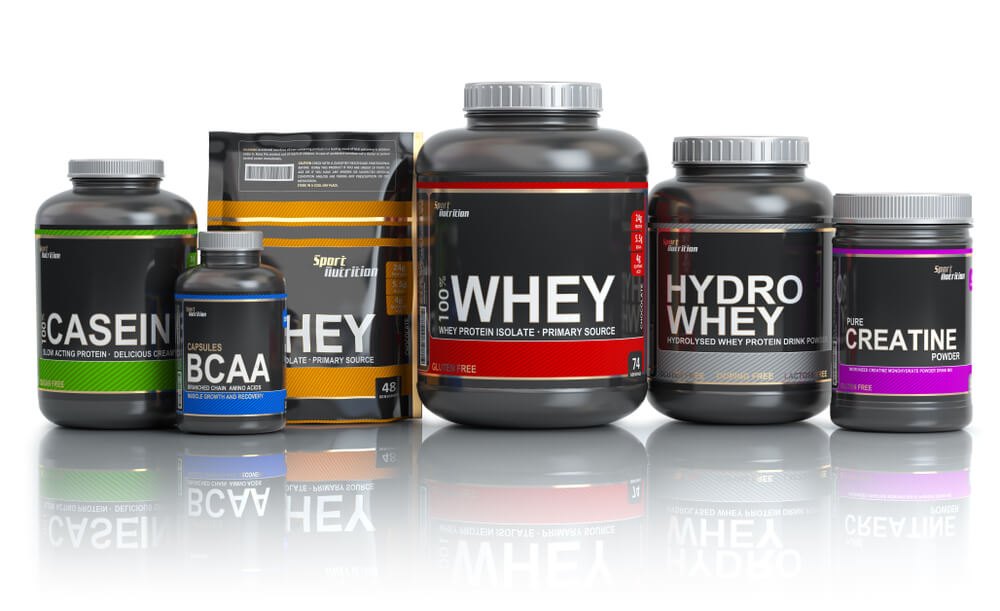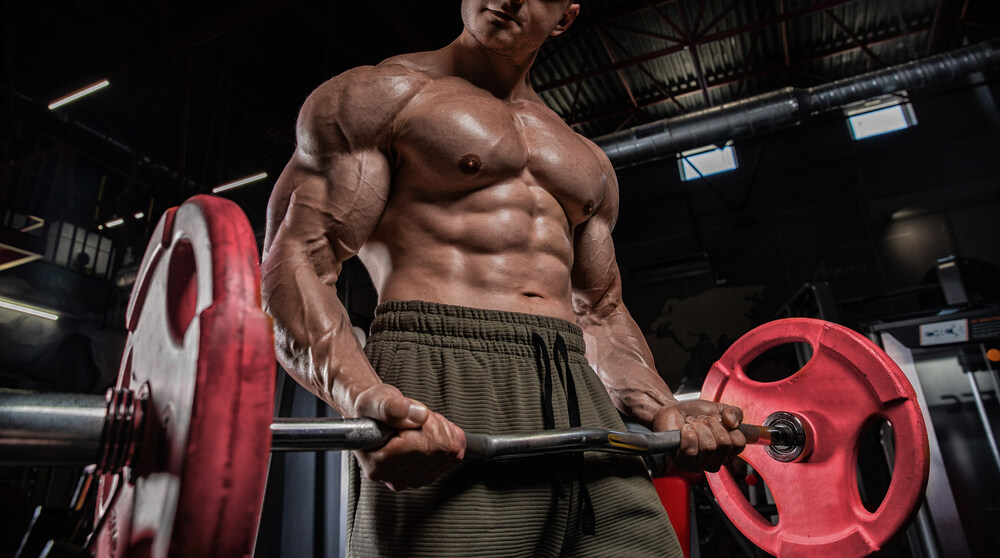Bodybuilding for Beginners: Mass-Gaining
Rome wasn’t built in a day—and neither is muscle mass. A routine established upon healthy meals, extensive workouts, and plenty of rest, however, yields the foundation upon which growth is guaranteed.
Big Muscles and Bigger Principles
Everyone starts somewhere, but starting in the right place makes all the difference. Top-tier bodybuilders spend decades bulking up, slimming down, consuming nutrients, and burning calories. The human body is a machine—and the best machines are fine-tuned for fuel efficiency, performance reliability, and power.
So, where does bodybuilding for beginners technically start?
Those pursuing chiseled looks, if they’re already seasoned lifters, might thrive right away. For those new to exercise in general, however, the profession can be incredibly intimidating. In both scenarios, one’s willingness to take roads less-traveled is a vital trait to have.
Lifting is all about lifestyle.
Interestingly, this lifestyle is mostly about maintenance rather than power-rides and performance competitions. As with any expansive sport, it’s impossible to start at the top—or even the middle. You’ll get there, don’t worry. This is simply a pre-build note for pre-built success, down the line:
The start of your journey might not be what you expected—but it’s the fastest route to a stellar physique. So, if you’re ready to go—let’s take those first steps towards bulking up.
Step One: Measure Your Meals for Mass Growth

Our first stop is the kitchen—which is, for many, the real room where progress is made. Nutrition is the most crucial component of muscle-building—accounting for approximately 80 percent of a physique’s shape. Without the proper fuel, your body doesn’t perform well.
If it doesn’t perform well, it can’t build muscle. Unfortunately, proper nutrition is overlooked by many new bodybuilders.
While experienced bodybuilders are dedicated meal-tinkerers, their bodies also demand highly specific nutrient ratios to continue growing. As such, a basic approach to your meals is more than enough. You can still get creative, of course, but you’ll need to stick to three nutritional rules to gain muscle mass. You should also approach them as daily goals:
- For every pound of bodyweight, eat one gram of protein
- For every pound of bodyweight, eat two grams of carbs.
- For every pound of bodyweight, eat 0.4 grams of fat.
It’s a simple food map—but it’s one that guarantees muscle growth. Every lifter needs to tweak their diet, at some point, but new lifters have a major advantage over those who’ve trained for years: Their muscles aren’t used lifting weights, so they’ll explode with growth to meet the environment’s challenges when these building blocks are introduced.
Step Two: Learn About Supplements, But Save Them for Later

To make solid gains, you’ll also need to avoid a pitfall introduced early on: an over-reliance on hyped-up, marked-up exercise supplements. They’re mostly just marketing gimmicks, at the end of the day—but they’re still mass-purchased by new bodybuilders eager to make some progress.
Notice how we said they’re mostly gimmicks, however. Truth be told, supplements sold at top-shelf prices are still grounded in the core components of nutrition: They really do contain the goods which promote better workouts, faster recovery, and bigger muscles.
Looking for the best set of supplements to get the gains you want?
Shop for the best bodybuilding supplements here.
But the flashiest supplements, more often than not, also contain ingredients that can hinder your progress—such as the artificial sweeteners more likely to foster flab than fast-twitch muscle mass.
Identifying the Lousy Supplements
The biggest downfall of these supplements is their ratio of legitimately effective ingredients. Taking supplements can be tricky, as most are only effective in certain amounts. Consuming approximately five grams of creatine per day, for example, can positively impact your recovery rates. If you were to take fifteen grams per day, however, your body would likely reject a majority of it.
Even so, many supplement brands market their products with a ‘more is better’ approach. It isn’t rare to see a triple-serving of creatine in flashy pre-workout blends, unfortunately. In some cases, the same blend might underdose other useful supplements as well—rendering them ineffective, all the same.
Identifying the Great Supplements
It’s wise to avoid taking supplements until you’ve lifted weights for several years. This is because proper weightlifting form, much like food, is a prerequisite to any muscle growth at all.
So, to get the most out of your supplements—and your dollar—stick with protein powder and a daily vitamin, for now.
Once you’ve gained a little experience, you can supplement your lifting sessions with creatine and amino acid supplements. Alongside a daily protein shake, these two supplements are all you really need for now.
Try to avoid flashy creatine drinks containing massive ingredient constellations, if possible. Creatine is creatine, and amino acids are amino acids. Reduce extra ingredients as much as possible, because it gives you more control over dosage amounts.
The best approach, of course, is to purchase each supplement separately—measuring and mixing them together for maximum value.
Step Three: Create the Fitness Program

Plenty of bodybuilding programs exist—and each can be customized endlessly. As with nutrition, however, some exercises are excellent cornerstones for any bulking strategy. Before engaging these lifts, it’s also a good idea to become better acquainted with auxiliary lifts—so as to be conditioned for the compound lifts known best for their mass-gaining capabilities.
Warming Up
Each lifting day, be sure to warm up for at least fifteen minutes. While most exercise days can be approached with as little as a five-minute cardio session—bulk-centric exercises like squats, deadlifts, and bench press can place excessive stress on tight muscles. Likewise, they can quickly create joint, ligament, and tendon issues if mobility exercises fall by the wayside.
Choosing the Exercises
The ‘Big Three’ lifts offer the most potential bodybuilding for beginners currently prioritizing their physique’s foundation. Each lift engages multiple muscles simultaneously—resulting in much more growth.
If you have more experience with one lift, in particular, modifying this lift is a good strategy for maximizing muscle volume during a plateau period.
The ‘Big Three’ lifts utilize many of the same muscles, as well—which means your compound lift of choice can be used to gain experience in the others.
Decline Bench Press for Deadlift Conditioning
If you’re still learning how to squat and deadlift correctly, for example, you can put your bench press experience to good use: Extra sets of decline bench press with light weights, but more than 10 repetitions per set, is useful for strengthening the lower back muscles responsible for a stable deadlift.
Deadlifts for Squat Conditioning, and Vice Versa
Deadlifts and squats already engage many of the same muscles—yet the angles they’re engaged at introduce more conditioning opportunities. Romanian deadlifts, for instance, can be used to target glute and calf muscles. Doing so is a great way to prep your legs for squats in general, so as to avoid the wobbly squat descents known to cause hamstring injuries.
Bulking Up with Free Weights
While exercise machines have come a long way, free weights reign supreme when nurturing a bodybuilder physique’s foundation. Dumbbells and barbells are best, especially when used for compound lifts, and they can be interchanged every week to keep muscle memory at bay.
Free weights are popular because they require a lot of balance to engage. Even seasoned lifters who exclusively use free weights benefit from these micro-movements: Well-balanced dumbbell presses still employ one’s posterior deltoids for stabilization—as well as the wrists. Every time these exercises are done, the lifter achieves a higher degree of muscle micro-tears—creating mass in notoriously tough-to-reach areas across the physique.
Gaining Mass with Micro-Tears
The importance of micro-tears, themselves, can’t be understated either: If a workout session causes too few—then potential growth is lost. This isn’t necessarily a bad thing if it’s an irregular occurrence: Aiming for fewer microtears, in some sessions, is a good strategy to improve recovery times for compound lifts later in the week.
On the other hand, however, experts assert that micro-tears are optimal not only for gaining mass—but also definition. Both are bodybuilding physique necessities.
Whether muscle volume, definition, strength, or endurance are a current bodybuilding goal, the primary strategy used to pursue them is always the same: progressive overload.
Bodybuilders must constantly introduce new angles, one-rep maximums, diets, and cardio sessions into their workouts—as their bodies, eventually, become too accustomed to familiar exercises.
This is the same ‘muscle memory’ element mentioned earlier, and it’s the primary cause of bodybuilder plateaus—wherein growth ceases due to physiological limits. Figuring out which physiological limit is causing a plateau can be tough.
The Strategy of Long-Term Bodybuilding

Oddly, the difficulty primarily arises from the importance of progressive overload in general: To grow bigger, one must lift heavier weights. This golden rule of mass-gaining tends to exist behind most plateau stretches—but not always. Things like diet, fatigue, lifting form, and even stress can profoundly impact a bodybuilder’s journey.
These factors cannot be defined by exercise repetitions—and diets can slowly depart from original calorie counts unbeknownst to the bodybuilder.
As with any fitness challenge, of course, even the most daunting plateaus can be beaten. Unfortunately, their very existence posits a major hurdle to bodybuilders adhering to strict routines—and doubly so if their routines revolve around seasonal competitions.
Conclusion
Fitness-lovers, dieters, bodybuilders, and athletes alike are ever-pitted against the future’s unexpected challenges. When we think about bodybuilding, we may not readily account for struggles outside of the weight room—such as a plateau’s persistence across cardio routines and recreational sports.
Rather, we may not recognize challenges beyond a fitness framework for what they actually are: challenges.
Bodybuilders often face plateaus all the same—answering them with exercises emphasizing things like micro-tears. If micro-tear exercises fail, high-volume routines take their place—as it’s sometimes possible to overcome a raw strength plateau with endurance training.
A takeaway always exists in such cases, and beginner bodybuilders seeking inspiration are certain to find it, as well: that love of lifting permeates all aspects of life—thriving when even the most daunting challenges arise. And, for the lifter, this is enough.
-Terry Asher
Terry Asher
Latest posts by Terry Asher (see all)
- Better Family – Product Review Liquid Daily 2 oz - Dec 16, 2024
- Post-Workout Recovery: The Key to Optimal Performance - Nov 25, 2024
- Pre-Workout Supplements – Everything You Need To Know - Nov 18, 2024











[…] Source link […]
[…] Read The Entire Article By Terry Asher Here. […]
[…] Source link […]
[…] Source link […]